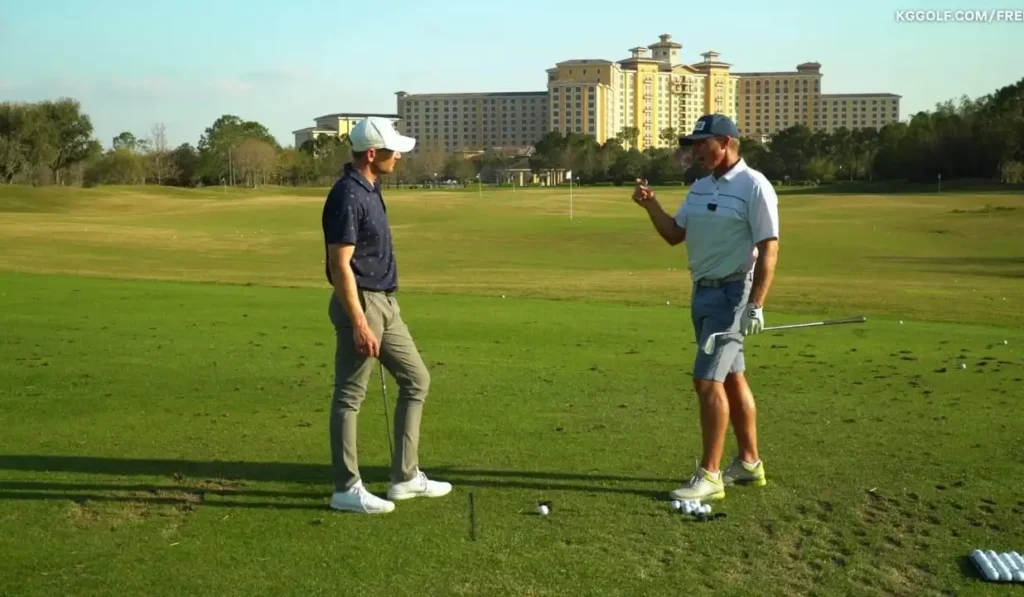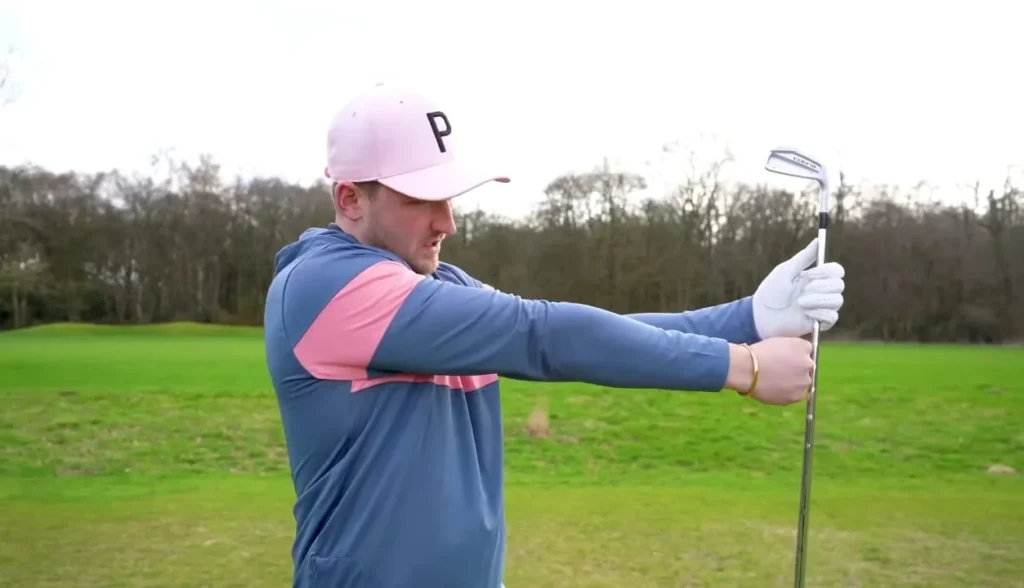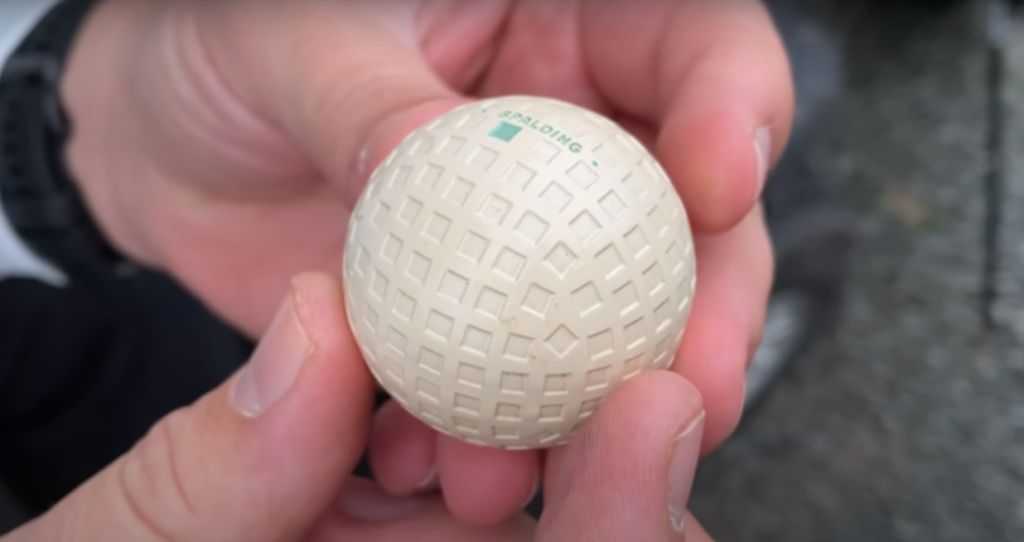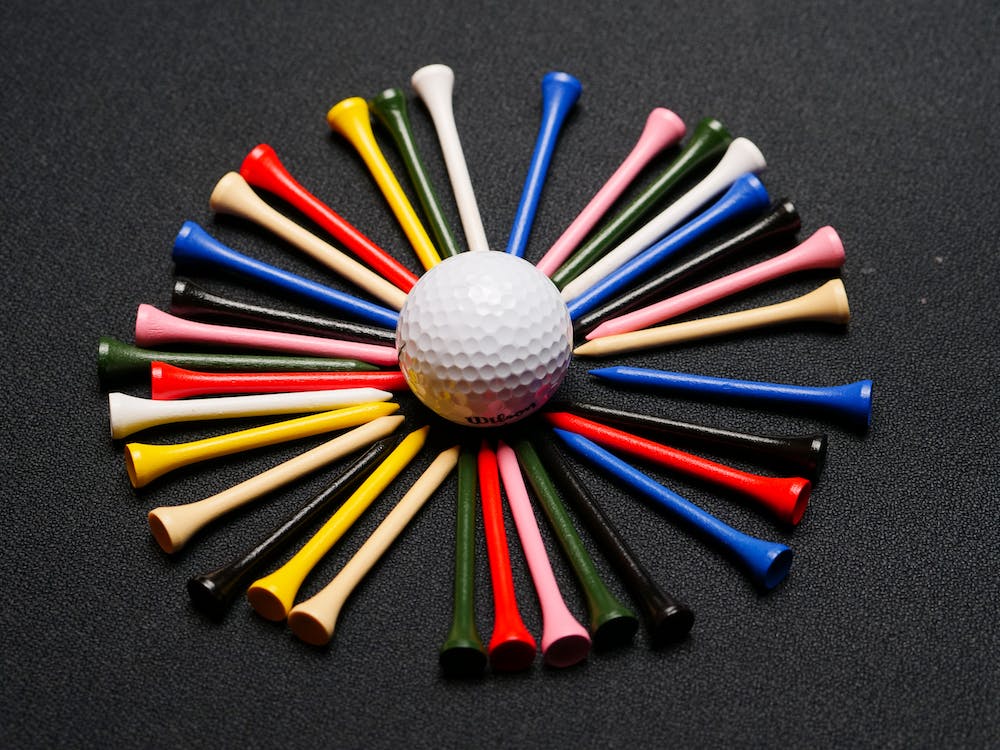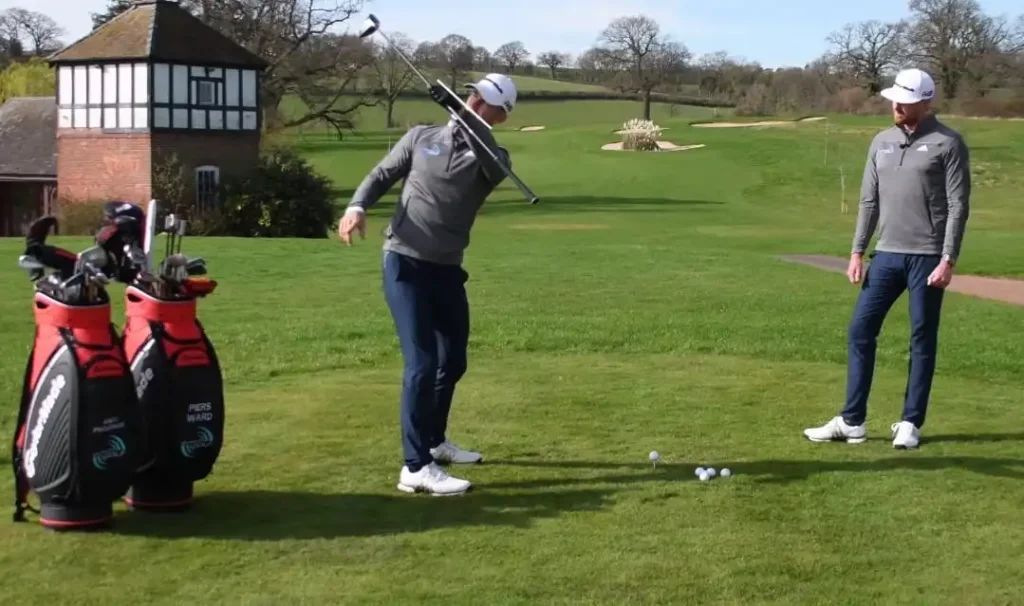The concept of golf ball compression seemed very important when we were writing about 3-piece vs 4-piece golf balls just a couple of days ago. Understanding the concept of compression for golf balls is essential for any golfer looking to optimize their game. Golf ball compression refers to the degree to which the ball deforms upon impact with the clubface. This seemingly small factor can have a profound impact on the ball’s trajectory, distance, and overall performance. In this exploration, we delve into what compression means for golf balls and how it influences your experience on the golf course. What are the compression ratings for different popular golf ball brands out there? How to compress a golf ball successfully? We’ll go through different aspects of golf ball compression in this article.

Golf Ball Compression: An In-Depth Explanation
What is Golf Ball Compression?
Golf ball compression refers to the deformation a golf ball endures when hit by the clubface, measuring its level of compression or deformation upon impact with it. In other words, the value of compression for golf balls typically ranges between 30 and 120, with lower numbers denoting softer balls while higher numbers represent harder ones. In even different wordings, golf ball compression is the amount the ball compresses when it makes contact with the club face. So, you can measure the density of the ball’s inner core.
How Compression For Golf Balls Works?
Now, we know that compression means how tightly wound its core threads are so you can select a dimpled sphere based on your swing speed. Golf ball compression occurs when the club face interacts with a ball’s core to propel it forward, as determined by the swing speed and core structure of said ball. That’s why golfers with a slower swing speed need low-compression golf balls while the ones with a higher swing speed require high-compression ones. Typically, if your swing speed is below 100 mph then you gotta choose low compression for golf balls.
Factors Influencing Golf Ball Compression
Understanding some elements regarding golf ball compression is integral for optimizing your game. Get your golf ball compression tester and learn how to compress a golf ball properly. So, here are some factors that will determine the ratings of compression for golf balls for you:
Swing Speed
Swinging at faster speeds often yields balls with greater compression rates, leading to better performances overall.
Core Construction
The core is an essential factor when it comes to compression; different materials and constructions result in unique compression properties.
Cover Material
Additionally, cover materials can influence performance. For instance, urethane covers can often provide softer feel characteristics than their alternatives.
How Compression Affects Performance
Understanding compression for golf balls is crucial because it directly influences two essential aspects of your game – distance and control. So, go through the golf ball compression chart 2024 and learn which ball you ought to play with to get the best results. Here is how golf ball compression ratings affect your gameplay:
Distance
Golfers who possess slower swing speeds often favor lower compression balls because their increased energy transfer leads to an increase in distance and shot-making ability.
Control
Higher compression balls provide more control, making them suitable for players with quicker swing speeds who prioritize accuracy over distance.
Understanding Golf Ball Compression: A Detailed Overview
Compression for golf balls is determined by how tightly their core threads are wound together, impacting their softness or hardness. Low compression balls (80 or lower) tend to travel further because of their soft feel, making them suitable for slower swings, while high compression balls (100+) provide maximum accuracy with harder hits. Whether you choose a 100 compression golf ball or a 60 compression golf ball, you gotta go with the best ones; go with a golf ball that matches your swing speed.
How to Match Compression to Your Swing Speed?
Your swing speed plays an integral part in selecting an optimal compression setting for your golf ball. So, here’s how compression for golf balls should work out for you:
- Low compression (below 80) is recommended for players with slower swing speeds of 85 mph or below
- Middle compression (between 80 to 100) is perfect for those with varied speeds from 85 to 100 mph).
- High compression (above 100) is recommended for players who possess swing speeds exceeding 100 miles per hour.
Compression and Distance: Matching Your Swing Speed
But what’s the connection between compression ratings and shot distances? Well, compression for golf balls will change based on how many yards you’re aiming for in a game. As a general rule of thumb, bear this in mind:
- Under 200 yards, you should go for swing speeds below 80 mph and also use a low-compression ball.
- Between 200 to 240 yards, opt for low-compression balls in which 80-90 mph swing speeds exist and mid-compression balls which provide speeds from 90-100 mph.
- Over 275 yards, if traveling at speeds above 100 mph, consider switching to a high-compression ball for greater directional control and stability.

Golf Ball Compression Chart 2024
If you are having trouble mastering the science behind golf ball compression then we have discussed some golf ball models here for your convenience. So, go through this golf ball compression chart 2024 now. This chart will help you find the best sphere for your next game on the grass.
Bridgestone
- Tour B X: 3 Piece, Compression: Medium (85), Speed: Fast
- Tour B XS: 3 Piece, Compression: Medium (85), Speed: Fast
- Tour B RX: 3 Piece, Compression: Low (65), Speed: Mid
- Tour B RXS: 3 Piece, Compression: Low (65), Speed: Mid
- e12 Soft: 3 Piece, Compression: Low (50), Speed: Mid
- e12 Speed: 3 Piece, Compression: Medium (75), Speed: Fast
- e6: 2 Piece, Compression: Low (45), Speed: Mid
- e6 Lady: 2 Piece, Compression: Low (40), Speed: Mid
- Laddie Extreme: 2 Piece, Compression: Low, Speed: Slower
Callaway
- Chrome Soft: 3 Piece, Compression: Medium (75), Speed: Mid
- Chrome Soft X: 4 Piece, Compression: High (90), Speed: Fast
- ERC Soft: 2 Piece, Compression: Low (60), Speed: Mid
- Supersoft: 2 Piece, Compression: Low (40), Speed: Slower
- Supersoft Magna: 2 Piece, Compression: Low (40), Speed: Slower
- Superhot: 3 Piece, Compression: Low (50), Speed: Mid
- Warbird: 2 Piece, Compression: High (90), Speed: Mid
- Strata Eagle: 3 Piece, Compression: Medium, Speed: Mid
Cut
- DC: 4 Piece, Compression: High (105), Speed: Fast
- Blue: 4 Piece, Compression: High (90), Speed: Fast
- Grey: 3 Piece, Compression: Medium (80), Speed: Mid
- Red: 2 Piece, Compression: Low (60), Speed: Slower
- Matte: 3 Piece, Compression: Low (65), Speed: Mid
Mizuno
- RB Tour: 4 Piece, Compression: High (90), Speed: Fast
- RB Tour X: 4 Piece, Compression: High (110), Speed: Fast
- RB 566: 2 Piece, Compression: Low, Speed: Mid
- RB 566 V: 3 Piece, Compression: Low, Speed: Mid
Snell
- MTB-X: 3 Piece, Compression: High (90), Speed: Mid
- MTB-Black: 3 Piece, Compression: Medium (80), Speed: Mid
- Get Sum: 2 Piece, Compression: Low, Speed: Slower
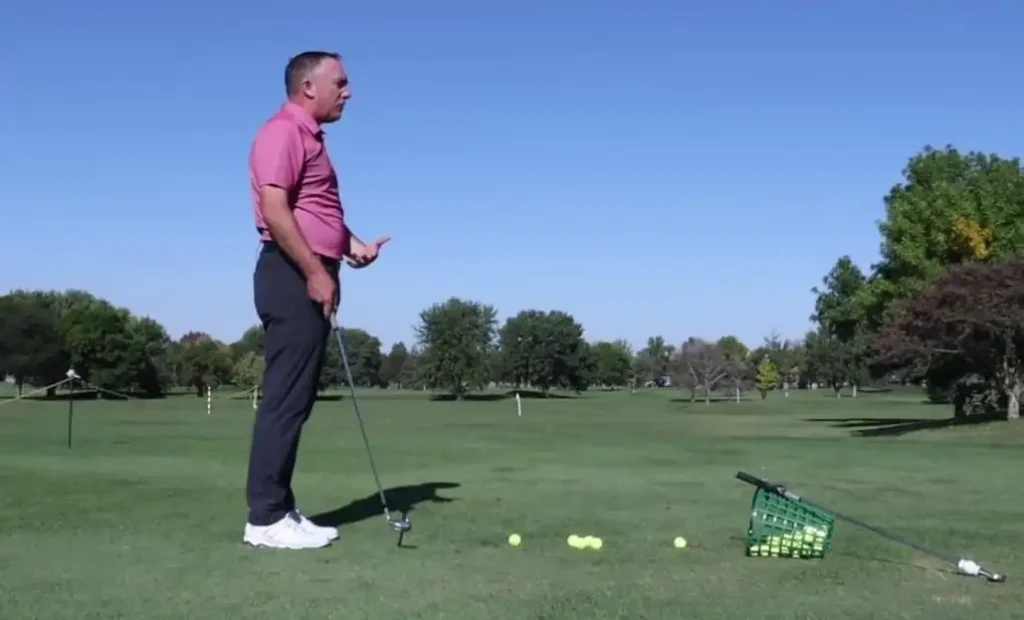
Srixon
- Z-Star: 3 Piece, Compression: High (90), Speed: Mid
- Z-Star XV: 4 Piece, Compression: High (100), Speed: Faster
- Q-Star: 2 Piece, Compression: Medium (75), Speed: Mid
- Q-Star Tour: 3 Piece, Compression: Medium (70), Speed: Mid
- Soft Feel: 2 Piece, Compression: Low (60), Speed: Slower
- Soft Feel Lady: 2 Piece, Compression: Low (60), Speed: Mid
TaylorMade
- TP5: 5 Piece, Compression: Medium (80), Speed: Mid
- TP5X: 5 Piece, Compression: High (90), Speed: Faster
- TP5 Pix: 5 Piece, Compression: Medium (85), Speed: Mid
- TP5X Pix: 5 Piece, Compression: High (100), Speed: Faster
- Tour Response: 3 Piece, Compression: Medium (70), Speed: Mid
- Project (a): 3 Piece, Compression: Medium (70), Speed: Mid
- Soft Response: 3 Piece, Compression: Low, Speed: Mid
- Noodle Long And Soft: 2 Piece, Compression: Low (35), Speed: Slower
Titleist
- ProV1: 3 Piece, Compression: High (90), Speed: Mid
- ProV1X: 4 Piece, Compression: High (100), Speed: Faster
- AVX: 3 Piece, Compression: Medium (80), Speed: Mid
- Tour Speed: 3 Piece, Compression: Medium (80), Speed: Mid
- Tour Soft: 2 Piece, Compression: Medium (65), Speed: Mid
- Velocity: 2 Piece, Compression: Medium, Speed: Mid
- TruFeel: 2 Piece, Compression: Low, Speed: Slower
Vice
- Pro: 3 Piece, Compression: Low, Speed: Mid
- Pro Soft: 3 Piece, Compression: Low, Speed: Slower
- Pro Plus: 4 Piece, Compression: High, Speed: Fast
- Tour: 3 Piece, Compression: Low, Speed: Mid
- Drive: 2 Piece, Compression: Low, Speed: Slower
Volvik
- Vivid: 3 Piece, Compression: Medium (80), Speed: Slower
- Vivid Lite: 3 Piece, Compression: Medium (75), Speed: Slower
- S3: 3 Piece, Compression: Medium (85), Speed: Mid
- S4: 4 Piece, Compression: High (95), Speed: Fast
- Crystal: 3 Piece, Compression: High, Speed: Slower
- Police: 3 Piece, Compression: Medium, Speed: Mid
- Power Soft: 2 Piece, Compression: Medium (70), Speed: Mid
- ViMax Soft: 2 Piece, Compression: Medium (75), Speed: Slower
- XT Soft: 3 Piece, Compression: Medium (70), Speed: Slower
- XT AMT: 3 Piece, Compression: High (90), Speed: Mid
Wilson
- Staff Model: 4 Piece, Compression: High, Speed: Faster
- Duo Professional: 3 Piece, Compression: Low (60), Speed: Mid
- Duo Soft+: 2 Piece, Compression: Low (35), Speed: Slower
- Duo Optix: 2 Piece, Compression: Low (30), Speed: Slower
- Fifty Elite: 2 Piece, Compression: Low (50), Speed: Slower
- Zip: 2 Piece, Compression: Low, Speed: Mid
- Tour Velocity Distance: 2 Piece, Compression: Medium, Speed: Mid
- Tour Velocity Feel: 2 Piece, Compression: Medium, Speed: Mid
Advancements in Golf Ball Technology
Golf ball manufacturers have seen great strides over the last 15 years in producing innovative golf balls for all skill levels, challenging the traditional belief that high-compression balls were only for better players. Companies like Bridgestone and Callaway offer low compression balls which have gained great traction across skill levels. This is what you should remember when discussing compression for golf balls.
Here’s how you can find the best compression rating based on your skills. The key is testing different balls and using the trial-and-error method to make sure you have found the best orb for your gameplay. Selecting the ideal golf ball often requires trial and error. So, explore various compression balls until one suits both your swing style and playing habits best. That’s how you can get the compression for golf balls right.
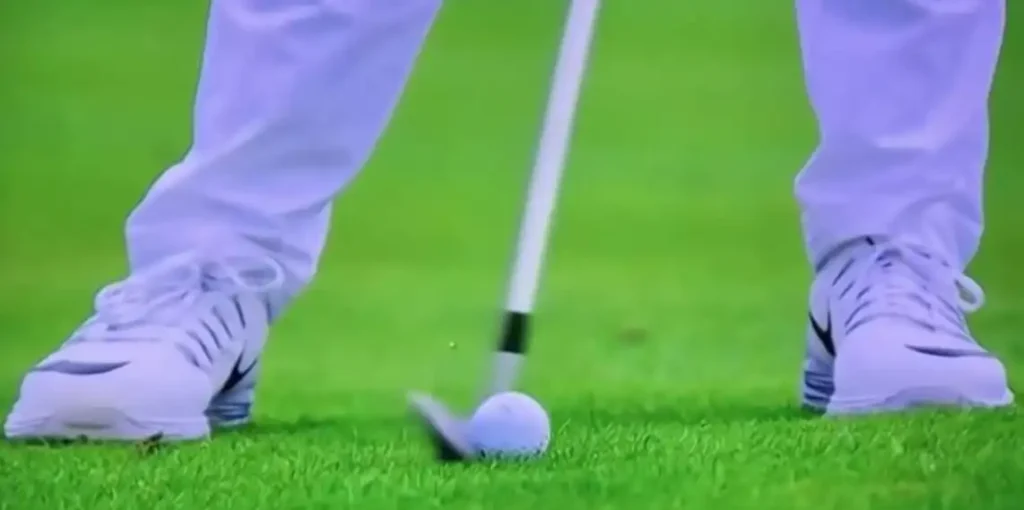
Conclusion: Finding Your Perfect Golf Ball
In conclusion, the compression for golf balls is far more than a technical detail; it’s a critical element that can make or break your performance on the greens. Finding the right compression for your swing speed and style is akin to unlocking a key to better control, distance, and accuracy in your shots. As you navigate the vast world of golf ball options, understanding compression adds a layer of knowledge that empowers you to make choices tailored to your unique game. So, the next time you stand on the tee, consider the compression of your golf ball as a silent partner in your pursuit of the perfect swing.
If you want more information then read our article about the differences between soft golf balls and hard golf balls. It’ll help you understand how compression affects your game.
FAQs About Compression For Golf Balls
How Do I Know What Golf Ball Compression to Use?
Your swing speed plays a key role in selecting an optimal compression ball. Slower swing speeds generally benefit from balls with lower compression levels while faster ones might need higher levels for optimal results. Go check the golf ball compression chart 2024.
Do Golf Balls Lose Their Compression?
Yes, over time golf balls may lose some of their compression due to wear and tear. Exposure to extreme temperatures, frequent use, or storage conditions can hurt a ball’s original compression levels. So, choose the right compression for golf balls.
What Compression Ball for Swing Speed?
Low-compression balls should be chosen for slower swing speeds (i.e., under 90 mph). Midrange swing speeds (90-105 mph) often perform best with medium-compression balls while higher swing speeds (over 105 mph) usually call for high-compression balls.
What is the Lowest Compression Golf Ball?
Wilson Duo Soft+ and Callaway Supersoft golf balls feature low compression levels to increase distance while providing a softer feel for an improved distance experience. These ultra-low compression golf balls boast enhanced distance performance as well as a better feel than their competition.
How to Compress a Golf Ball?
Compressing a golf ball effectively involves several elements such as selecting an ideal ball for your swing, choosing suitable equipment and positioning it correctly, weight shifting as desired, and maintaining lag. Practice drills or professional guidance may further increase your ability to compress it effectively. That’s how you can master the compression for golf balls.
